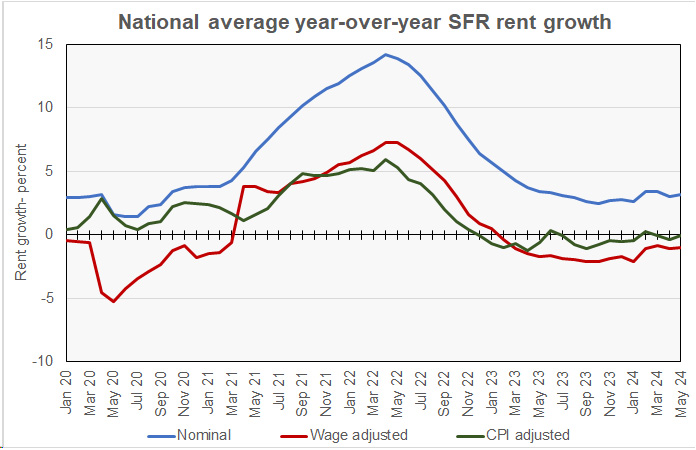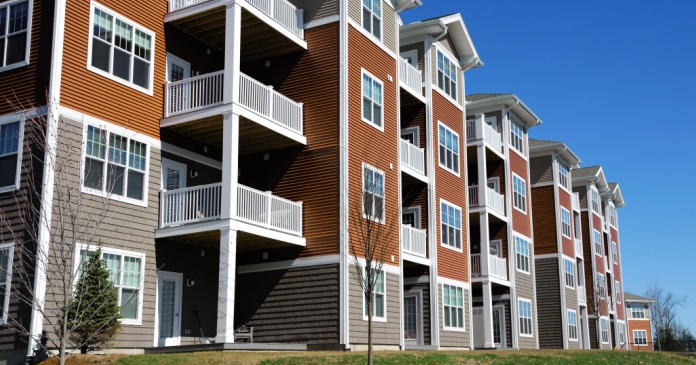CoreLogic reported that their single-family rent index (SFRI) for May rose 3.2 percent from its year-earlier level. This is up 0.2 percentage points from last month’s reported year-over-year rent growth rate but is down from the 3.4 percent annual rent growth rate reported in May 2023.
Adjusted vs. nominal
The history of the overall SFRI growth rate since January 2020 is shown in the first chart, below. The chart shows both the nominal year-over-year rent growth rate and also the wage-adjusted and CPI-adjusted rates. The wage-adjusted rate is the year-over-year nominal rate less the year-over-year rate of wage growth as measured by the seasonally-adjusted average hourly earnings of production and non-supervisory employees. The CPI-adjusted rate is the year-over-year nominal rate less the year-over-year rate of growth in the consumer price index (CPI).

The chart shows that both wage-adjusted and CPI-adjusted rent growth rates were strongly positive when rent growth surged in 2021. However, both adjusted rent growth rates have generally been negative in 2023 as nominal rent growth has moderated.
For reference, Yardi Matrix found that single-family rent growth in May was 1.4 percent year-over-year as rents rose $6 for the month. However, Yardi Matrix focuses on properties of 50 or more units while CoreLogic takes a broader look at the single-family rental market, since small holdings still represent a majority of the market.
Ranking the metros
CoreLogic reports the year-over-year rate of growth in the SFRI for a select group of metropolitan areas. St. Louis remained in the top spot in May with SFR rent growth of 6.2 percent. Seattle moved into second place with rent growth of 5.9 percent. New York City (5.9 percent) fell to third place while San Francisco (5.2 percent) and Chicago (4.8 percent) rounded out the top 5 metros.
CoreLogic once again identified two metros that saw SFR rents decline in May. Austin continues to see declining rents, but it was joined this month by Phoenix, which replaced Miami on the loss list. Austin saw rents fall by 0.6 percent year-over-year while Phoenix saw rents fall by 0.3 percent. Miami (+0.2 percent), Orlando (+0.6 percent) and Dallas (+1.8 percent) filled out the five metros with the lowest rent growth rates.
CoreLogic is a data and analytics company. It calculates the SFRI using “a repeat pairing methodology to single-family rental listing data in the Multiple Listing Service.” The CoreLogic report is available here.












